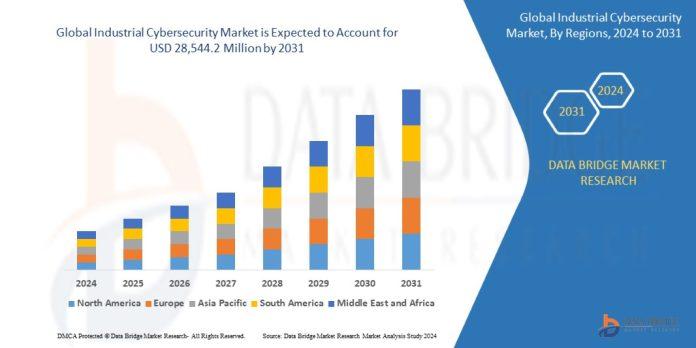Introduction
As industries increasingly integrate digital technologies into their operations, the importance of robust cybersecurity measures cannot be overstated. In 2024, the realm of industrial cybersecurity is witnessing a paradigm shift with the advent of artificial intelligence (AI). This article explores the emerging trends in AI for industrial cybersecurity, delving into the innovations that are reshaping the landscape and fortifying critical infrastructure against evolving cyber threats.
Definition
Industrial cyber security is the component of an Industrial Automation and Control System (IACS) that depends on product suppliers using the proper security development lifecycle. Products include embedded hardware and software, as well as SCADA and DCS systems. There are several ways that normal IT cybersecurity and industrial cybersecurity are not quite the same. Industrial cybersecurity safeguards operational technology assets, also referred to as embedded equipment, which are a class of devices that are frequently far older than IT systems and are frequently vulnerable to unintentional alterations or interactions.
Trends in AI for Industrial Cybersecurity
-
Predictive Analytics and Threat Intelligence:
One of the key trends in AI for industrial cybersecurity is the widespread adoption of predictive analytics and threat intelligence. AI algorithms are becoming adept at analyzing vast amounts of data to identify patterns and anomalies, enabling proactive threat detection. Predictive analytics helps anticipate potential cyber threats, allowing industrial systems to implement preventive measures before an attack occurs. The integration of threat intelligence feeds into AI-powered cybersecurity systems further enhances their ability to recognize and counteract emerging threats in real-time.
-
Machine Learning in Anomaly Detection:
Machine learning (ML) is playing a pivotal role in refining anomaly detection capabilities in industrial cybersecurity. Traditional rule-based systems often struggle to keep pace with the dynamic nature of cyber threats. ML algorithms, on the other hand, can adapt and learn from evolving patterns, making them highly effective in detecting unusual activities within industrial networks. This enables a more precise identification of potential security breaches, reducing false positives and enhancing the overall efficiency of cybersecurity measures.
-
Autonomous Cyber Defense Systems:
The integration of autonomous cyber defense systems is a transformative trend in industrial cybersecurity. AI-driven technologies are evolving to autonomously detect, respond to, and mitigate cyber threats without human intervention. These systems leverage advanced algorithms, threat intelligence, and real-time analytics to make split-second decisions, fortifying industrial networks against cyber attacks. The autonomy of these defense systems not only accelerates response times but also minimizes the impact of attacks by swiftly isolating affected components.
-
Quantum-Safe Cryptography:
As quantum computing progresses, traditional cryptographic methods are at risk of being compromised. In response to this emerging threat, AI is playing a crucial role in the development and deployment of quantum-safe cryptography in industrial cybersecurity. Quantum-resistant algorithms, fortified by AI-driven threat analysis, are becoming essential components in safeguarding sensitive industrial data. This forward-looking approach ensures that industrial systems remain resilient in the face of future advancements in quantum computing.
-
Behavioral Biometrics for Access Control:
Enhancing access control measures is paramount in industrial cybersecurity, and behavioral biometrics is emerging as a cutting-edge solution. AI algorithms analyze user behavior patterns, such as keystroke dynamics and mouse movements, to create unique biometric profiles. This innovative approach adds an extra layer of security, making it challenging for unauthorized entities to gain access to critical industrial systems. Behavioral biometrics, when integrated with AI-driven anomaly detection, provides a comprehensive solution for securing access points.
-
Robust Cloud Security Solutions:
The widespread adoption of cloud computing in industrial settings necessitates robust security solutions. AI is increasingly being employed to fortify cloud security by continuously monitoring and analyzing network activities. AI algorithms can detect unusual patterns in cloud traffic, identify potential security threats, and implement rapid responses to mitigate risks. This trend not only enhances the security of industrial data stored in the cloud but also facilitates the seamless integration of cloud technologies into industrial processes.
-
Threat Hunting with AI:
Traditional cybersecurity approaches often involve a reactive stance, responding to threats after they occur. With AI-powered threat hunting, industrial cybersecurity is transitioning to a more proactive strategy. Threat hunting involves actively seeking out potential threats within the network using AI algorithms to analyze historical data, identify vulnerabilities, and preemptively address security risks. This approach significantly reduces the likelihood of successful cyber attacks, making it a pivotal trend in fortifying industrial cybersecurity.
-
Privacy-Preserving AI:
Balancing the need for enhanced cybersecurity with concerns about privacy is a critical aspect of AI deployment in industrial settings. Privacy-preserving AI techniques are gaining prominence, allowing organizations to leverage the benefits of AI without compromising sensitive information. Techniques such as federated learning, homomorphic encryption, and differential privacy enable industrial systems to analyze data without exposing individual details, ensuring a secure and privacy-respecting approach to AI-driven cybersecurity.
Growth Rate of Industrial Cybersecurity Market
According to Data Bridge Market Research’s analysis, the global industrial cybersecurity market, which was valued at USD 16,489.30 million in 2023, is projected to grow at a compound annual growth rate (CAGR) of 7.1% from 2024 to 2031, when it is predicted to reach USD 28,544.2 million.
Conclusion
As we navigate the complex landscape of industrial cybersecurity in 2024, the integration of artificial intelligence emerges as a game-changer. The trends discussed, from predictive analytics to privacy-preserving AI, collectively contribute to creating a robust defense against the evolving threat landscape. The synergy between AI and industrial cybersecurity not only strengthens the resilience of critical infrastructure but also empowers organizations to stay one step ahead in the ongoing battle against cyber threats. Embracing these emerging trends will be crucial for industries seeking to safeguard their operations and ensure a secure digital future.
To read more about the Industrial Cybersecurity Market click here.


